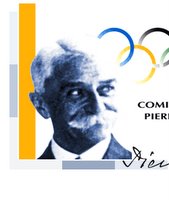
A Regulus cruise missile was used for one attempt to deliver mail.Rocket mail is the delivery of mail by rocket or missile. The rocket would land by deploying an internal parachute upon arrival. It has been attempted by various organisations in many different countries, with varying levels of success. It has never been seen as being a viable option for delivering mail, due to the cost of the schemes and numerous failures.
The collection of postage stamps used for (and depicting) rocket mail is a specialist branch of aerophilately.
Gerhard Zucker
In the 1930s, German Gerhard Zucker experimented with powder rockets similar to fireworks. Between 1931 and 1933, he travelled throughout Germany displaying his rocket and claiming that it could be used to deliver mail.
After moving to the United Kingdom, Zucker attempted to convince the General Post Office that postal delivery by rocket was viable. On 31 July 1934 a rocket was launched over a 1600-metre flight path between the Hebridean islands of Harris and Scarp in Scotland. Around 1.07 m long with a diameter of 18 cm, the fuselage was packed with 1,200 envelopes. Unfortunately for Zucker, the rocket exploded and destroyed most of its cargo.
Stephen Smith
Stephen Smith, a Secretary of the Indian Airmail Society, combined his work with his interest in rocketry. His first launch was on 30 September 1934, and he experimented with 270 more by 4 December 1944. 80 of these contained mail, and his achievements include the first successful rocket mail sent over a river and the first rocket to carry a parcel.
The Oriental Fireworks Company supplied Smith with 16 rockets between 23 March 1935 and 29 June 1935. Between them, these "Silver Jubilee" flights carried over a thousand covers.
In 1992 the Indian government issued a stamp to celebrate the centenary of Smith's birth, calling him "the originator of rocket mail in India".
United States Postal Service
The first successful delivery of mail by a rocket in the United States was made on 23 February 1936, when two rockets that were launched from the New Jersey shore of Greenwood Lake landed on the New York shore, some 300 metres away.
In 1959 the U.S. Navy submarine USS Barbero assisted the United States Postal Service (USPS) in its search for faster, more efficient forms of mail transportation with the first and only delivery of "Missile Mail". Shortly before noon on 8 June 1959, Barbero fired a Regulus cruise missile — its nuclear warhead having earlier been replaced by two official USPS mail containers — at the Naval Auxiliary Air Station in Mayport, Florida. Twenty-two minutes later, the missile struck its
target.
USS Barbero first day commemorative cover. The return address is the Postmaster General.The USPS had officially established a branch post office on Barbero and delivered some 3000 pieces of mail to it before Barbero left Norfolk, Virginia. The mail consisted entirely of commemorative postal covers addressed to President of the United States Dwight Eisenhower, other government officials, the Postmasters General of all members of the Universal Postal Union, and so on. They contained letters from United States Postmaster General Arthur E. Summerfield. Their postage (four cents domestic, eight cents international) had been cancelled "USS Barbero Jun 8 9.30am 1959" before the boat put to sea. In Mayport, the Regulus was opened and the
mail forwarded to the post office in Jacksonville, Florida, for further sorting and routing.
Upon witnessing the missile's landing, Summerfield stated, "This peacetime employment of a guided missile for the important and practical purpose of carrying mail, is the first known official use of missiles by any Post Office Department of any nation." Summerfield proclaimed the event to be "of historic significance to the peoples of the entire world", and predicted that "before man reaches the moon, mail will be delivered within hours from New York to California, to Britain, to India or Australia by guided missiles. We stand on the threshold of rocket mail."
Russian submarine launches
Since the end of the Cold War, Russia has made a few experimental rocket mail launches from nuclear submarines in the Sea of Okhotsk toward western Russia, using now-surplus missiles.
Reusable launch vehicles
Some think that rocket mail, or at least ultra-elite business package delivery, may become commercially viable with the developmemt of fully reusable launch systems, particularly single-stage to orbit vehicles. Such systems would allow package delivery anywhere in the world in 30-45 minutes. This idea has been forwarded by aerospace engineer Robert Zubrin of Mars Society fame, and was the original business plan behind Pioneer Rocketplane (now Rocketplane Limited, Inc.), which he co-founded. Zubrin has since left the company, which is now focused on pursuing a somewhat more conventional space tourism strategy. The potential of package delivery with reusable launch vehicles is discussed in Zubrin's book Entering Space.
References
^ http://www.wikipedia.org
^ Wade, Mark. (28 March 2005) "Zucker Rocket" at Encyclopedia
Astronautica. Accessed 4 September 2005.
^ "Stephen Smith" at King George V Silver Jubilee. Accessed 5 September 2005.
^ "Indian Rocket Mail Detail" at King George V Silver Jubilee.
Accessed 5 September 2005.
^ "100 Years of Sustained Power Flight History" at Federal Aviation
Administration site. Accessed 5 September 2005.
^ "ARS Chronology" at Encyclopedia Astronautica. Accessed 5 September 2005.
 The distinction belongs to Yonge Street, which is listed as a whopping 1,178 miles (1,896 km) in length -- roughly the distance from San Diego, California, to Seattle, Washington. It starts on the Toronto lakeshore and winds its way northwesterly along Highway 11 to Rainy River, Ontario, at the Minnesota border.
The distinction belongs to Yonge Street, which is listed as a whopping 1,178 miles (1,896 km) in length -- roughly the distance from San Diego, California, to Seattle, Washington. It starts on the Toronto lakeshore and winds its way northwesterly along Highway 11 to Rainy River, Ontario, at the Minnesota border. 










































 Add my feed to your Rss
Add my feed to your Rss
